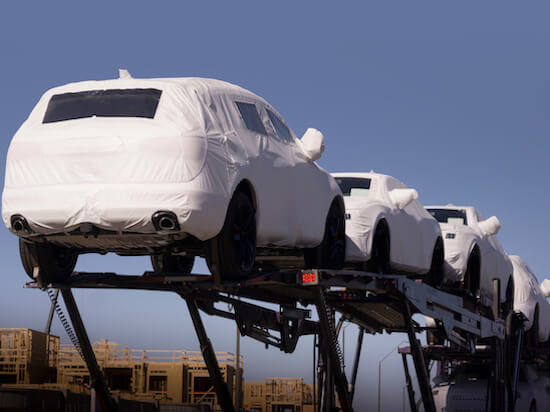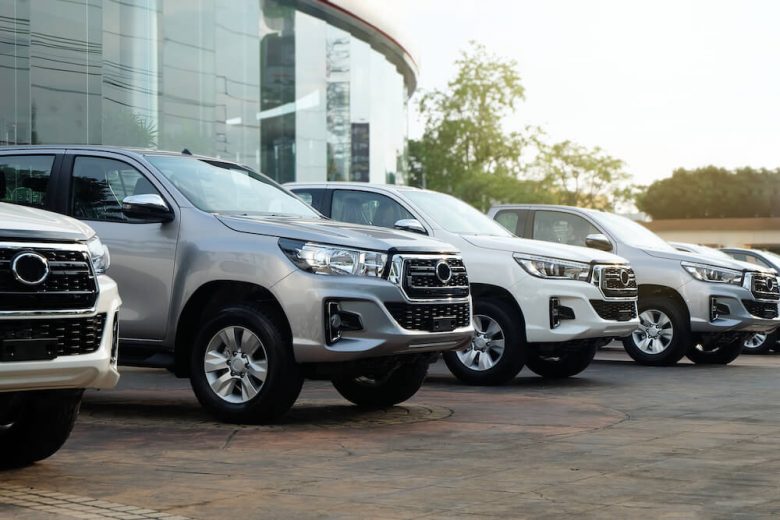America’s love affair with pickups, SUVs, and vans (which represent the truck category) is getting stronger and stronger, outpacing smaller cars and sedans. Even as gas prices fluctuate and increase as the years go by, trucks have been Americans favored mode of transportation for quite some time now.
Use eTags© to Quickly Complete Your DMV Service. Renewals, Title Transfers and More, All Online!

For a bit of context…
Since 1994, average gas prices have fluctuated between 96.2 cents/gallon in February 1999 and $4.11 in July 2008 which is $5.20 a gallon in today’s dollars. In October 2023, the average gas is $3.57, but western states are a lot higher. For instance, California’s average is $5.55 while Oregon is at $4.49 according to AAA.
In 2021, the average American driver bought an estimated 570 gallons according to Pew Research
Over 1 million trucks sold right before summertime
Just this past May, Americans bought over one million trucks according to Motor Intelligence data, accounting for a tad over three-quarters of all car sales! When examining car brands, the statistics are even more shocking. For instance, 98% of Ford sales in May were trucks. Just reminder, trucks include pickups, SUVs and vans less than 8,500 pounds). For Chevrolet, 87% of sales were trucks. Honda? 66% of sales were trucks. Kia? 74%! For over a decade now, the truck category has surpassed sedans.

In 2022, pickup trucks accounted for 20.5% of new vehicle sales according to GoodcarBadcar
Smaller cars are slowly going extinct
Since 2016 plenty of sedans, coupes, hatchbacks, wagons, and convertibles discontinued in North America. According to GM Authority, the Honda CR-Z has been discontinued in 2016. The Lexus CT discontinued the following year. Ford stopped producing it Focus model in 2018. The Infiniti Q70 went off the market in 2019. 2020 bid farewell to the Mercedes-Benz SLC. The following year, the Mazda 6 was discontinued. And Ford stopped production on its GT model in 2022. These are just some of the cars off the market, but you can check out the full list on GM Authority.
SEE ALSO: 2022 ELECTRIC TRUCKS THAT ARE ALL THE RAGE

Plush interiors, powerful engines, roomy cargo spaces, high-tech features and loading and towing capabilities, are just some of the reasons why Americans love their trucks. They’re so versatile that soccer moms, outdoor lovers, and tradesmen alike can purchase them.
Montana had 73.6% of truck registrations in 2021 (Federal Highway Administration)
Ford sold 58,654 F-Series models in September alone
The most recent trucks sales numbers from GoodcarBadcar automotive sales data gives you a good sense of just how popular and beloved pickup trucks, SUVs and vans are. In the third quarter of 2023, which is from July 1st to September 30th, Ford sold 190,477 of its F-Series pickup in the U.S. Chevy sold 143,467 of its Chevrolet Silverado. The GMC Sierra? 73,219 units sold. The Hyundai Santa Cruz? 9,033. In September 2023 alone, Toyota sold 20,579 Tacomas and 11,261 Tundras. The Nissan Titan? 1,619 while Chevy sold 8,507 Chevrolet Colorados.

When looking at the first six months of 2023, GM sells 407,078 of its Chevrolet Silverado and GMC Sierra combined according to TheFastLaneTruck. In fact, the Sierra trucks are up 20.2% compared to last year. The Ford F-Series including the Lightning EV had 383,893 sales, while the Toyota Tundra had almost 60,000 sales. The GMC Hummer EV? 49 sold in the first half of the year.
For truck title and registration online, visit eTags.com for a quick, convenient, and no waiting in line service.
The western part of the U.S. was first to have more trucks
The Washington Post published an article back in April of this year, highlighting when trucks have become the majority of vehicles in the U.S. Until the late 80s, passenger cars were the go-to vehicle for most Americans. It was only in 1989 that trucks took over the roadways; first in Alaska. By the year 2,000, Wyoming, Montana, South Dakota, Alabama, and Kansas had more SUVs, pickups, crossovers, and vans.
In 2021, California had 53.1% of truck registrations (Federal Highway Administration)

By 2012, Colorado, Nebraska, Nevada, Florida, Vermont, Hawaii, and Texas joined the “more trucks” club. By 2020, New York, Connecticut, Rhode Island, California had more trucks on their roadways. For a more detailed list of when individual states had more trucks than cars, check out the Washington Post article.








